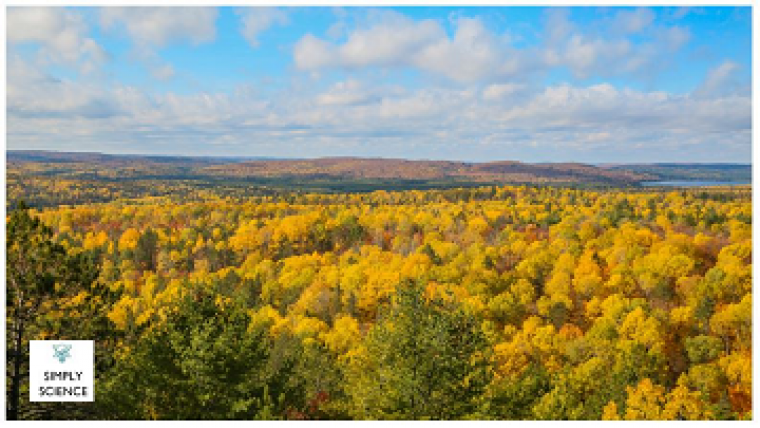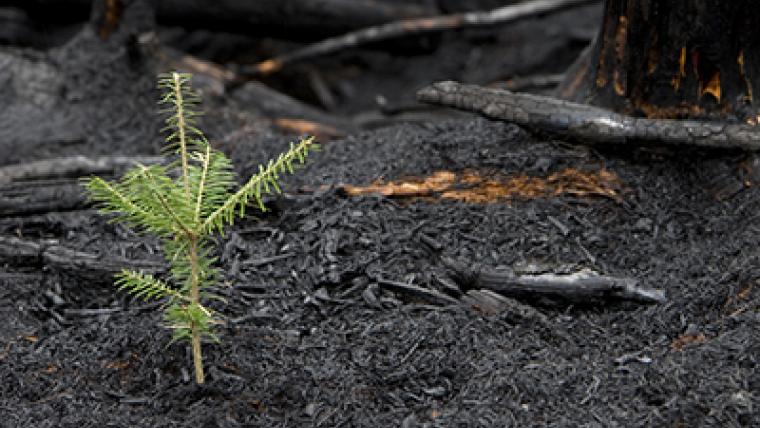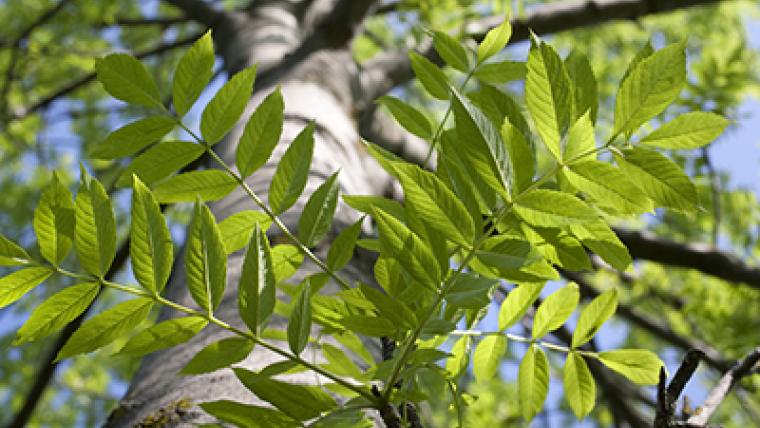Changing How We Fight Wildfires
Today, we hear from someone who started his career by fighting fires on the ground. Now, he’s turned his sights to the sky. We’re about to find out how a satellite the size of a dishwasher could radically change the way we fight fires in Canada.
Transcript
Joel Houle (host): Wildfires are unpredictable and hard to control.
You might already know that changing weather patterns are producing more extreme fire events, which means that wildfires are becoming even harder to supress. We’re seeing this right now in Australia, and we saw it late last year in California. The most vivid example in Canada was the Fort McMurray fires a few years back.
But do you know why they’re harder to put out? Today, we hear from someone who started his career by fighting fires on the ground. Now, he’s turned his sights to the sky. We’re about to find out how a satellite the size of a dishwasher could radically change the way we fight fires in Canada.
Welcome to a new episode of the Simply Science podcast. I’m your host, Joel Houle.
Yes, you heard right: no more “Ask NRCan,” no more “Natural Elements.” Moving forward, all of our podcast episodes will fall under the umbrella of Simply Science. Why are we doing this? Well, we just want to simplify things.
You really have to appreciate the irony that a podcast channel named “SIMPLY Science” would go out of its way to confuse its audience by having a different name for every type of podcast that we do. Basically this is what happens when you’ve been a bureaucrat a little too long.
What we’re going to do — we’re bringing everything back under the Simply Science banner. What does this mean? Well, for one, we’re not going to be tied to specific formats, which will give us more creative freedom: we can change things up once in a while; we can bring in more guests; maybe have a different host; go live on location. We want to have some fun with this.
We want to push the boundaries and explore different ways of doing things. Our scientists, our experts here at Natural Resources Canada do really cool and amazing things. And we want to share their stories and their work in the best way that we can.
But we also want to hear from you, too. Let us know if there are stories you want us to cover, guests you’d like to be interviewed. We know you’re out there, so don’t be shy! We’re still going to be releasing two episodes per month. So make sure that you subscribe so that you don’t miss an episode.
Okay, I think that’s enough exposition and self-promotion. Maybe we should actually start the show.
Joining me in studio today is Barb Ustina, editor-in-chief for Simply Science. Barb, how’s it going?
Barb Ustina: It’s going great! I’m so happy to be here. It sounds like there are a lot of exciting changes coming to Simply Science podcasts and in the days ahead … the days, weeks and months ahead.
Joel Houle: Yeah, I really like the fact that we’re actually in the studio together, in front of our microphones, at the same time! It’s a bit of a treat.
Barb Ustina: Yea, exactly, we can make eye contact as we’re talking to each other; so that’s special.
Joel Houle: I like how we use the term “studio” but we’re basically in a closet.
Barb Ustina: Yeah, not “studio” — it’s the “closet.”
Joel Houle: But maybe we don’t want to ruin the illusion for our audience. Anyway, let’s get to the topic at hand.
You currently live in Ottawa, but you used to live in Alberta and B.C. for a long time. Were you ever personally affected by wildfires?
Barb Ustina: Well, I wasn’t really personally affected by wildfires. But I was in B.C. in 2017 and 2018, and those were two truly horrific fire seasons in that province. And, I think it was 2017, I was working for the B.C. government, and I was actually stationed at the emergency control centre in Kamloops during one of the fires in B.C.
And that’s where we sort of monitored all the communications — we sort of monitored the resources, the planes going out and everything. And it was really remarkable to see at the ground level how people are affected by fires. And everything from wildlife control — farmers would contact us saying all my wildlife got out of my fences and we have got to round them up. So everything — trying to save people driving down roads that are now blocked by fires.
So that experience — just seeing it first-hand was interesting. And also you can feel it in the air quality when you’re just walking outside. You know: they sky is pinky, it has a yellow tinge to it, your throat gets a bit dry, and any kind of allergies act up. That sort of thing, that’s kind of it.
I did know a couple of people who lived in fire centres, like communities that were really affected by fires. There’s one gentleman I knew who purchased a house, and he was evicted one year because of a wildfire. He moved to another house the next year, and he was also evicted due to a wildfire. So it’s hard to imagine unless you see it up close.
Joel Houle: I was going to use the word intense, but that’s an understatement. I guess the truth is, wildfires are dangerous, right? You’re here to talk to us about new ways of fighting wildfires. How dangerous are these fires?
Barb Ustina: Well, we all know how powerful and devastating wildland fires can be. In 2019, Canada had a pretty average fire season, so it was somewhat of a relief to those areas that have seen a lot of fire activity in the past.
But that’s not the case worldwide. You already mentioned the fires in Australia and California. There were fires in the Amazon. So, really, it’s a global concern.
And fires destroy homes, businesses, entire communities. Fort McMurray is still rebuilding. The immediate damage we see on social media is dramatic. But there’s also long-term economic damage that can extend years into the future. Fires wipe out forests and wildlife. So, yes, there is a move to protect our forests and manage any threats. It’s a huge undertaking, and nature isn’t always cooperative.
So let’s put things into perspective. I have a quick question for you, Joel: Just off the top of your head, can you imagine how much vegetation is destroyed by wildfires in Canada in any average fire season?
Joel Houle: What metrics are we using?
Barb Ustina: Square kilometres, maybe?
Joel Houle: Square kilometres…. I don’t know, like 5,000?
Barb Ustina: That’s a pretty good guess, but you’re off by probably 20,000 square kilometres.
Joel Houle: Wow!
Barb Ustina: In an average year, wildfires destroy about 25,000 square kilometres across Canada. And let’s put that into perspective: that’s about the equivalent to half the size of Nova Scotia.
Joel Houle: Half the size of Nova Scotia!
Barb Ustina: Yes, that’s every single year. Hard to imagine, isn’t it?
Joel Houle: Wow! That is incredible. What are we doing here at Natural Resources Canada to address this issue?
Barb Ustina: Well, you know, NRCan has a very important role. Our scientists constantly look for ways to improve how fires are predicted and how they’re managed once they get started. In fact, NRCan is considered a world leader in fire research and has been for decades.
Joel Houle: You have a specific initiative that you wanted to talk about today. What can you tell us about the WildFireSat project?
Barb Ustina: It’s a cross-government collaboration bringing together scientists from NRCan with experts from the Canadian Space Agency and Environment and Climate Change Canada.
Together, they’re developing the first-ever satellite made specifically to monitor fires. This is the first one in the world, ever. It will use artificial intelligence to analyze satellite images. And it will do all this in near–real time.
This is a big deal for fire fighters on the ground. Because they’ll get reliable information about how a fire is spreading, and that way they’ll be able to plan and assign resources. All this from a satellite basically the size of a dishwasher in orbit around 800 kilometres from the earth’s surface. Although it doesn’t launch for about five years or so, work is well under way.
To learn more about wildfires and the WildFireSat project, we reached out to Dr. Joshua Johnston from the Great Lakes Forestry Centre in Sault Ste. Marie, Ontario. As a former fire ranger himself, Josh knows a thing or two about fighting fires. Let’s hear what he has to say.
Joshua Johnston: Right now, when we fight fires in our country and in many of the countries around the world, we use this model called the initial attack. Which means that they want to find fires really small, really early in their lives, and then just aggressively put them out as fast as they can. It's a really effective way of doing it, but it doesn't always hold up. Because eventually you just have too many small new fires to keep up with them, and a few of them escape, and those ones that escape are the real problem.
Barb Ustina: Those small persistent fires are the ones that can eventually cause the most damage. If left unchecked, they can quickly grow into dangerous infernos. But it’s impossible to track every single small fire. And that’s why things get out of hand.
Joshua Johnston: Normally, what's happening is there's so many small fires that people — well, the whole system gets overwhelmed. They're out there fighting fires, and they're succeeding but there's just more fires than firefighters. And so those ones that take a walk on you, they're the ones that caused the real problem, like the Fort McMurray fire.
Barb Ustina: This is where the WildFireSat comes in, providing near real-time intelligence, details like the height of the flames, the heat of the fire, how deep a fire extends into the earth’s surface. It will measure smoke plumes, monitor air quality and determine how much carbon is being emitted. It’s the kind of crucial information fire fighters can’t get their hands on right now. Josh explains.
Joshua Johnston: Right now, the only real way to get that information is to put somebody in an aircraft and fly them over the fire — somebody who has a lot of experience with fire — then they’ll make a visual assessment of what they see. And what we're aiming to do, what we will do, is provide that sort of report for every fire in the country and the late afternoon data.
So instead of having to dedicate aircraft and experienced people to just go and do reconnaissance, we're going to do comprehensive national reconnaissance with the satellite. And that'll actually help them prioritize fires, and it'll free up the resources for more important jobs.
Barb Ustina: Josh has been building systems that use remote sensing data for nearly a decade, He believes artificial intelligence is the way of the future. But first, Josh and his team have to train the technology.
Joshua Johnston: What we're doing right now is this interesting little branch of artificial intelligence called computer vision, where we're actually just teaching our computers how to look at a picture and interpret it the way a person would. For WildFire Sat, that's a major step forward, and that's something that hasn't been done well in any of the satellites that are able to look at fires.
What we're aiming to do — and what we've actually just begun in the last few weeks — is we're developing an artificial intelligence system that will look at the raw data as it's coming into the satellite and make an assessment about whether or not there's actually a fire underneath it. And if there is a fire underneath it, it's going to prioritize that data and get it out the door even faster.
Barb Ustina: This is just the beginning. AI [artificial intelligence] capabilities continue to grow rapidly. Eventually, the WildFireSat will even be able to provide direction on the best way to fight a particular fire — whether by ground crews, bulldozers or air attacks.
Joshua Johnston: Once we do the detection, we then get into this whole other realm of products that are based on sort of the remote sensing physics — from the combustion dynamics to make assessments of how that fire is burning — and not just have a picture that says a fire’s here but to break it down to the deepest parts where we can tell you how long the flames are and we can tell you whether or not you can actually use a water bomber to suppress that or if it's safe for ground crews to be there.
And then we're building a whole other suite of programs that will actually sit on top of that, and they’ll take that information and tell you how long do you have before this fire reaches a community and, you know, sort of bring it to the simplest, most digestible piece of information for a fire manager to understand.
Barb Ustina: It’s all part of the job for Josh. But this is an all-hands-on-deck effort. The Canadian Space Agency leads, while Josh is in charge of a 24-person NRCan team.
There’s also input from academics, fire managers and provincial agencies. They’re developing world class tools for a one-of-a-kind satellite. But when you get right down to it, it’s the same kind of work NRCan has focused on for decades. New tools, same goals.
Joshua Johnston: When I talked about the fire growth modelling and sort of understanding how fire behaviour connects to suppression and to risk, that's what our agency is — we've always been experts in that.
What we're really doing is taking that old fundamental fire suppression science and this emerging technology and emerging, you know, sort of methodology with the AI side of it and all of the new algorithm engineering for remote sensing, and we're merging it all together into one sort of comprehensive intelligence tool.
We've got a big team of really motivated people. And what we're planning to do is basically take everything that we were already doing and kind of operationalize it in one direction. So in a lot of ways, WildFire Sat is actually just giving focus to a lot of the work that we've already been doing.
Barb Ustina: So Joel, as you can imagine, there’s a lot of interest in this work. He’s already had calls from countries around the world, including Australia — he’s in touch with their fire management agencies and their space agency. These are very difficult times. No one wants to see what’s happening in Australia happen again.
Josh, for his part, is taking it one step at a time. Remember, it will be several years before WildFireSat is even launched. In the meantime, we continue to fight fires the only way we know how, and it should be noted that many dedicated Canadian fire fighters are bravely offering assistance to folks in Australia.
Joel Houle: This is a very interesting and important topic.
Thank you, Barb, for sharing it with us.
Barb Ustina: It’s just one of the stories about the really important science we’re doing at NRCan. So, happy to share it with you and happy to be here!
Joel Houle: If you guys out there want to learn more about the WildFireSat mission, do check out the links in the episode description.
WildFireSat: Enhancing Canada's ability to manage wildfires, Canadian Space Agency – https://www.asc-csa.gc.ca/eng/satellites/wildfiresat/default.asp
Forest Fires, Natural Resources Canada – https://natural-resources.canada.ca/our-natural-resources/forests-forestry/wildland-fires-insects-disturban/forest-fires/13143
If you like this episode, please subscribe to our channel. You can also leave a review or share this episode with family, friends, neighbours, random people you meet on the street! Basically, what we’re trying to do is grow our podcast, so every little bit helps.
Simply Science also has a website and a YouTube channel, which I recommend you check out. We have in-depth articles and interesting videos that showcase the fascinating scientific work that we do at Natural Resources Canada. And you can find those links in the episode description as well.
Last but not least, feel free to follow me on Twitter. I’m at @JoelScience. Barb, are you following me on Twitter?
Barb Ustina: I am!
Joel Houle: Really?
Barb Ustina: You haven’t noticed? Are you following me on Twitter?
Joel Houle: I was going to call you out saying you don’t, but that kind of ruins my plans.
Barb Ustina: I do!
Joel Houle: Anyway, you guys, do like Barb and follow me on Twitter. And I just want to thank everyone, for listening! We’ll see you next episode
Barb Ustina: Bye!
Page details
- Date modified:


